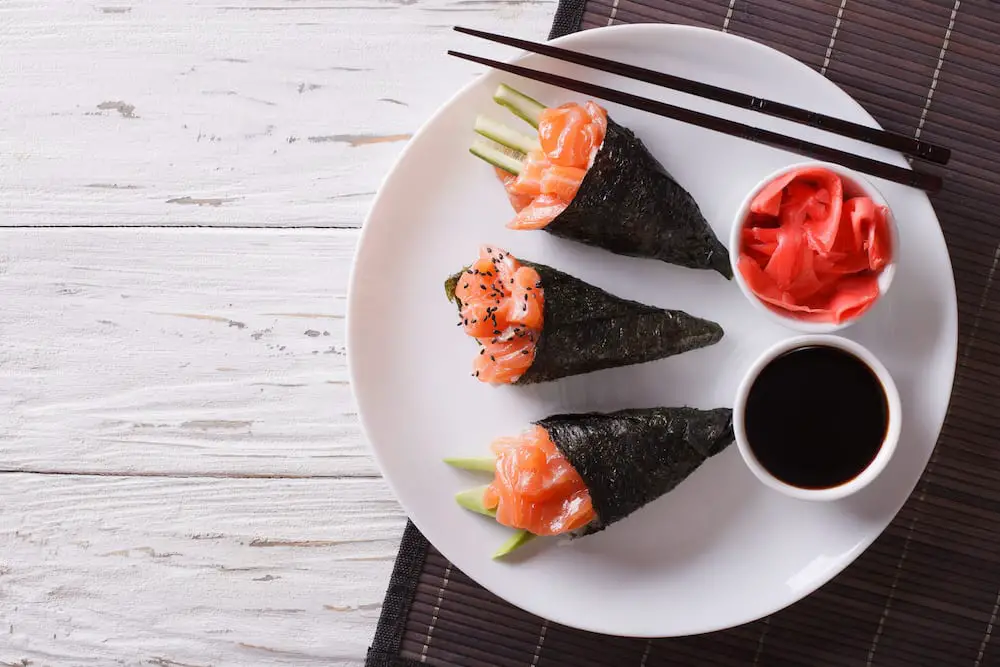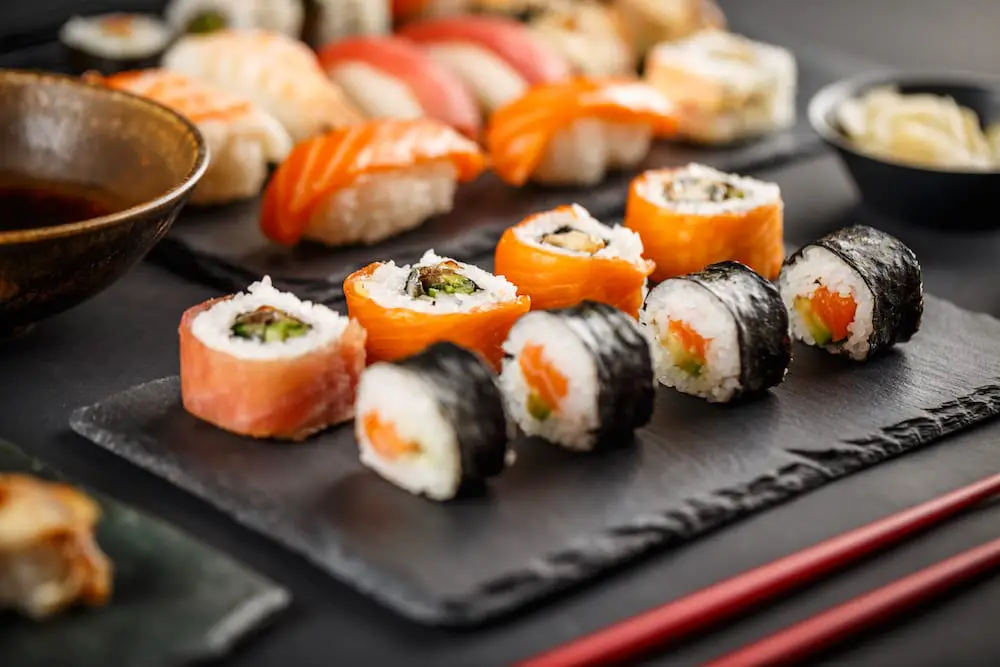If you come to think of it, it won’t come as a surprise that almost everyone has heard of sushi—either they have already tried it, or they want to. What’s surprising is that not many knows that sushi is available in many types.
In this article, we are going to clear out the confusion between two popular types of sushi in hopes to try to put an end to the cut roll vs hand roll sushi debate. If you have also wondered about their differences, this article will make you an expert of this dish.
In addition to all of that, as a bonus, we have also decided to share with you our tried and tested tricks to cutting sushi the way it should be cut. Ready? Let’s start with the basics.
What Is Sushi?
Although Japanese cuisine uses very few and simple ingredients, the food always comes out extremely unique. Sushi is one such example. To clear out some misconceptions, this delicacy does not necessarily include raw fish. Some types of sushi can even be purely vegetarian.
Sushi rice, also known as “shari” or “sumeshi,” is the key ingredient in every bite. Traditionally, sushi uses white medium-grain rice that has been prepared in vinegar. The other ingredients include a variety of seafood like squid, salmon, eel, tuna, and crab. Vegetables and sometimes even tropical fruits are also used.
Cut Roll vs Hand Roll Sushi
When it comes to these two types of sushi, you will not find much difference in ingredients. Both of them are wrapped in edible seaweed, nori, which looks similar to a dark green colored paper wrapping. However, as listed below, there are a few differences.

Name
In Japan, cut roll or just roll is called as “maki.” It originated from the Japanese word maku, which means to wrap or coil. On the other hand, hand roll is known as “temaki.” It is a casual yet popular Japanese sushi eaten in a cone-like form.
Ingredients
Roll or maki is made from a combination of rice, raw fish or any other seafood, and fruits or vegetables. Just like its meaning, it is then wrapped in one whole sheet of nori and then rolled with the help of bamboo mats.
Hand roll or temaki sushi is made using a nori sheet cut in half and then filled with rice or fish. Some rolls do not always include rice and may have vegetables or fruits. This sushi, as understood from its name, is prepared by hand and is eaten right after being folded.
Size and Shape
The roll or roster is tubular or cylindrical and is cut into about six to eight pieces using a sushi knife, or if you dont have one of those you can use a regular kitchen knife. Meanwhile, temaki is in the shape of a cone and does not have to be cut. Each piece of hand roll is about four inches long, much bigger than a piece of cut roll.
Serving Style
While the roll is typically eaten with a group of people where you can share your food, hand roll is meant for a single person only. Apart from this, people use chopsticks to eat maki, and since they are smaller, they eat it in just one bite.
On the other hand, you traditionally use your hands to eat temaki. Moreover, this type of sushi requires a few bites to finish each piece.
To help you see how one differs from the other, here’s a quick look at their differences:
| Cut Roll | Hand Roll | |
| Name | Maki | Temaki |
| Size | Six to eight small pieces | Single large piece |
| Shape | Cylindrical or tubular | Cone |
| Serving | Shared between people | Single serving |
How to Cut Sushi?
If you think that cutting sushi is easy, you might want to think again; it is not a piece of cake. The main problem lies in cutting the roll into perfectly sized pieces, all while making sure you’re not crushing the ingredients.
So how do you cut sushi? The key to perfect cuts lies in the right technique. Thus, in the following section, we are going to teach you how to cut sushi rolls with either a knife or with a cutter.
Method 1: Using a Knife
- First, you need to invest in a sharp, thin, and long knife. You can purchase these knives either online or from a local shop. If you do not use a very sharp blade, you will end up sawing through the roll, crushing the ingredients in the process.
- Find a flat, sturdy wooden chopping board. It should be long enough to fit the whole roll.
- Estimate the middle of the roll and cut it cleanly in one swipe with your sharp knife. Ensure that your knife reaches the bottom of the roll.
- After each cut, it is important to wet the knife in a bowl of water. Simply, dip the knife tip in a bowl of water, then tap the handle on the counter to wet the blade’s edge. This, in return, will prevent you from crushing the roll and stop the rice or seaweed from sticking to the blade.
- Lastly, cut each half of the roll into either thirds or quarters, with each piece being almost 1.5 inches long.
Method 2: Using a Roll Cutter
Are you preparing sushi in a large quantity? Does the idea of cutting each roll into perfect pieces make you frustrated? If so, we will recommend purchasing an electric sushi roll cutter and using it to cut sushi rolls.
- Place your rolls on the cutting tray, making sure that they are not sitting flat. The grooves will show the location of the cuts.
- Switch on the machine and press the lever or button to start it. Make sure to read your machine’s instruction manual before you operate it.
- The sharp blades will cut through the roll in a matter of seconds.
- Taking out the roll can be quite tricky. Make sure to use both hands to lift the whole roll out together from the machine. The rice in the sushi will hold it in a roll form.
Conclusion
You can find multiple types of sushi and sashimi all around the world. Some might not suit your taste buds, while others may be perfect for you. Hopefully, our discussion on cut roll vs hand roll has given you some insight on these types of sushi. The next time you decide to save money and make sushi at home, be sure to try our cutting technique!

